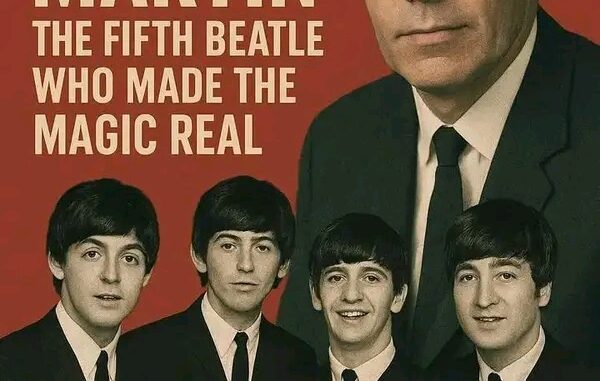
The Genius of George Martin: The Fifth Beatle Who Made the Magic Real
The Beatles are undoubtedly one of the most influential bands in the history of music, a phenomenon that transformed popular culture and redefined the boundaries of musical creativity. While John Lennon, Paul McCartney, George Harrison, and Ringo Starr are celebrated as the “Fab Four,” an often-overlooked figure played an equally pivotal role in shaping their legendary sound: George Martin. Revered as “the Fifth Beatle,” Martin’s contributions extended far beyond that of a typical producer, embodying the role of a musical visionary, mentor, and inventive collaborator whose genius helped turn raw talent into timeless masterpieces.
Early Life and Musical Foundations
George Martin was born in 1926 in London, into a musically inclined family. His early education at the Guildhall School of Music and Drama laid a solid foundation in classical composition and piano, nurturing a refined musical sensibility that would later become crucial in his work with the Beatles. His background in classical music and recording technology allowed him to see the potential for innovative experimentation in the recording studio—a skill that would revolutionize popular music.
Joining EMI and the Birth of a Partnership
Martin’s entry into the music industry as a producer at EMI’s Abbey Road Studios placed him at the heart of London’s burgeoning music scene. When he first encountered the Beatles in 1962, they were a talented but relatively unpolished band. Recognizing their potential, Martin took a gamble, signing them to EMI and becoming their producer. From the outset, Martin’s approach was different from traditional producers; he saw the band not just as performers but as creative collaborators.
Innovative Productions and Musical Pioneering
George Martin’s influence on the Beatles’ sound was profound. He was instrumental in crafting their distinctive style, blending rock and roll, pop, and classical elements. His classical training enabled him to suggest arrangements that elevated their songs, such as the string quartet in “Eleanor Rigby” and the orchestral crescendo in “A Day in the Life.” His mastery of the studio as an instrument allowed the Beatles to push the boundaries of what was possible in recording.
One of Martin’s most groundbreaking contributions was his innovative use of studio techniques. He pioneered techniques like tape loops, backward recordings, and multi-tracking, which added layers of complexity and surreal textures to their tracks. For “Tomorrow Never Knows,” he embraced the avant-garde, incorporating tape effects and experimental sounds that mirrored the psychedelic era.
Mentorship and Artistic Guidance
Beyond technical expertise, Martin served as a mentor to the Beatles, nurturing their creativity and encouraging their artistic ambitions. His calm, supportive presence in the studio fostered an environment where experimentation was welcomed. He often challenged their ideas, pushing them to explore new musical territories, which resulted in some of their most celebrated albums, including *Rubber Soul*, *Revolver*, and *Sgt. Pepper’s Lonely Hearts Club Band*.
Signature Albums and Iconic Tracks
Under Martin’s guidance, the Beatles produced some of the most influential albums in history. *Rubber Soul* marked a shift towards more introspective songwriting, while *Revolver* saw the band experimenting with psychedelic sounds and unconventional instruments. The pinnacle of their collaboration, *Sgt. Pepper’s*, was a kaleidoscope of musical innovation, blending genres, studio effects, and elaborate arrangements, all made possible through Martin’s inventive production.
Legacy and Enduring Influence
George Martin’s contribution to the Beatles’ success cannot be overstated. His ability to translate their raw ideas into polished, innovative recordings earned him acclaim in his own right. Many musicians and producers cite him as a major influence, recognizing his role in elevating the art of music production.
Following the Beatles’ breakup, Martin continued to produce other artists and explore his musical interests, but his work with the Fab Four remains his most enduring legacy. His death in 2016 marked the end of an era, but his influence continues to resonate through countless recordings and the evolution of modern music production.
Conclusion
George Martin’s genius lay in his capacity to see beyond the ordinary, to envision possibilities in sound that others could not perceive. His partnership with the Beatles exemplifies the profound impact a producer and visionary can have on shaping cultural history. As the “Fifth Beatle,” his quiet brilliance helped turn the band’s raw talent into masterpieces that continue to inspire generations, proving that behind every great artist is an even greater collaborator who makes the magic real.
Leave a Reply